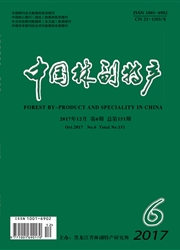

 中文摘要:
中文摘要:
采用2000-2013年间面板数据,以江淮城市群为研究对象,测度其14年间的发展水平。在此基础上建立基于城市效应和时间效应的双向固定效应模型,分析江淮城市群发展的驱动因素。研究发现:科技创新、对外开放、制度因素、人文环境、基础设施要素对江淮城市群发展有正向驱动作用,而产业结构、企业因素、阶段性政府决策、人才培养要素对江淮城市群发展的贡献度有待进一步提升。据此提出对策建议:提高科技创新驱动能力,促进产业集约式发展;加大人才培养力度,提升对外开放水平;拓宽民营资本发展领域,优化中小企业投融资环境;完善基础设施建设,营造城乡人文环境,提升区域决策能力。
 英文摘要:
英文摘要:
This paper adopted penal data from 2000 to 2013 and measured development level of Jianghaui urban agglomeration during the fourteen years. Then, a two-way fixed effect model was set up based on city effect and time effect to identify factors driving the development of the urban agglomeration. The results show that: technological innovation, and infrastructure had positive effects on the opening up, institutional factors, cultural environment development of the urban agglomeration, but industrial structure, enterprises, phased government policies and talent cultivation required further improvement. Based on these findings, the paper suggested that it be necessary to enhance scientific and technological innovation ability, promote intensive growth of industries, strengthen efforts to cultivate talents, improve the level of opening up, broaden development range of private capital, optimize investing and financing environment for middle and small-sized enterprises, perfect infrastructure construction, construct excellent and improve regional policy-making ability. cultural environment in both city and countryside,
 同期刊论文项目
同期刊论文项目
 同项目期刊论文
同项目期刊论文
 期刊信息
期刊信息
